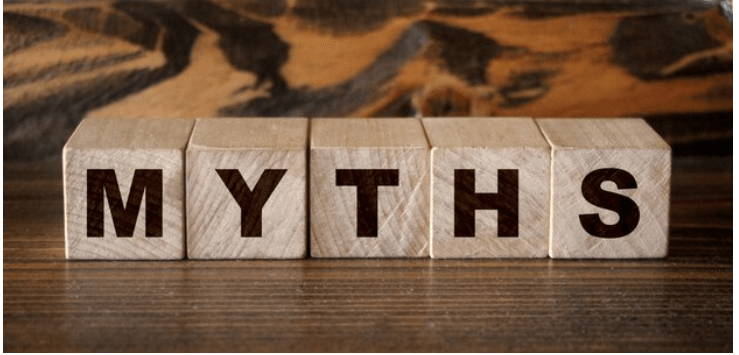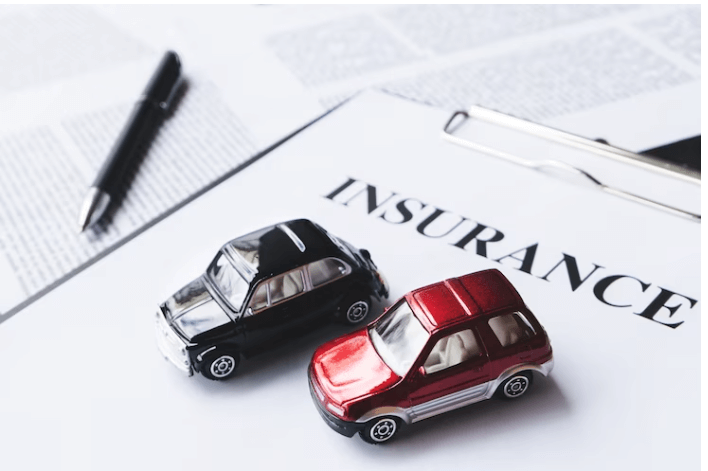If I Get in a Car Accident Who Pays In 2024 | An Expert Guide
Car accidents are unfortunate events that can lead to significant consequences, both physically and financially. In the aftermath, determining who bears the responsibility for damages becomes a crucial aspect of the recovery process. This article will guide you through the complexities of post-accident responsibility, shedding light on insurance coverage, fault determination, and legal options.
Contents
- 1 If I Get in a Car Accident Who Pays?
- 2 Insurance Coverage
- 3 Determining Fault
- 4 At-Fault Party’s Insurance
- 5 No-Fault Insurance
- 6 Uninsured/Underinsured Motorist Coverage
- 7 Legal Action
- 8 Third-Party Claims
- 9 Subrogation
- 10 Time Limits for Filing Claims
- 11 Impact on Premiums
- 12 Mediation and Arbitration
- 13 Common Myths
- 14 FAQs
- 15 Conclusion
If I Get in a Car Accident Who Pays?

The party responsible for paying in a car accident typically depends on the circumstances and the insurance policies involved. In general, the at-fault driver’s insurance is responsible for covering damages. This could include property damage to vehicles, medical expenses, and other related costs. In no-fault insurance states, each driver’s insurance pays for their own medical expenses regardless of fault.
If the at-fault driver is uninsured or underinsured, the injured party may need to rely on their own insurance coverage, such as uninsured/underinsured motorist coverage. In some cases, legal action may be necessary to recover damages if insurance is insufficient.
Determining fault is crucial in these situations. Insurance companies, police reports, and eyewitness accounts contribute to this determination. However, laws and regulations regarding fault and insurance coverage vary by jurisdiction.
It’s essential to report the car accident to the relevant authorities and exchange information with the other party involved. Contacting your insurance company promptly is crucial, as they can guide you through the claims process and help determine liability.
Insurance Coverage
Insurance also plays a crucial role in determining liability and compensating affected parties. It helps expedite the claims process, facilitating quicker resolution and reducing the need for protracted legal battles. Additionally, insurance can offer protection against uninsured or underinsured motorists, ensuring that victims are not left without compensation if the at-fault party lacks adequate coverage.
Role of insurance in car accidents
The role of insurance in car accidents is paramount, serving as a financial safety net for individuals involved in car accidents. Car insurance provides coverage for various aspects, including property damage, bodily injury, and medical expenses. In the event of an car accident, insurance helps mitigate the financial burden by covering repair or replacement costs for damaged vehicles and medical expenses for injuries sustained by drivers, passengers, or pedestrians.
Types of insurance policies
There are several types of insurance policies related to car accidents. Liability insurance covers the cost of damage and injury the policyholder may cause to others. Collision insurance covers damage to the policyholder’s vehicle in the event of a collision. Comprehensive insurance covers non-collision-related damages, such as theft, vandalism, or natural disasters. Personal injury protection (PIP) covers medical expenses and sometimes lost wages for the policyholder and passengers, regardless of fault. Uninsured/underinsured motorist coverage provides protection if the at-fault party is insufficiently insured. Understanding these policies is essential for individuals to make informed choices based on their needs and potential risks.
Determining Fault

Determining fault in a car accident is a crucial aspect of the claims process and often involves a thorough investigation by insurance companies, law enforcement, and sometimes even the legal system. Various factors are considered to establish who is at fault. Eyewitness accounts can provide valuable perspectives, and their statements can influence the determination of fault.
Police reports play a significant role in determining fault. Law enforcement officers at the car accident scene gather information, interview witnesses, and assess the evidence to create an official report. Insurance companies heavily rely on these reports to establish liability.
Traffic laws and regulations are also instrumental in assigning fault. Violations of traffic rules, such as running a red light or failing to yield, can clearly indicate which party is responsible for the car accident.
In some cases, both parties may share a portion of the blame, resulting in a determination of comparative or contributory negligence. The degree of fault assigned to each party may affect the amount of compensation they can receive.
At-Fault Party’s Insurance
responsible for covering the damages sustained by the other party or parties involved in the car accident. This includes property damage to vehicles, medical expenses, and other related costs. The insurance company may negotiate and settle claims on behalf of the at-fault party, aiming to reach a fair resolution with the affected parties.
Responsibilities of the at-fault party
The at-fault party in a car accident bears several responsibilities regarding their insurance. Firstly, they are typically required to report the car accident promptly to their insurance company. This involves providing details of the incident, such as the date, time, and location, along with information about the parties involved. Cooperation with the insurance company’s investigation is essential, including providing a statement about the events leading up to the car accident.
Coverage limitations
Coverage limitations may apply to the at-fault party’s insurance. These limitations could be dictated by the policy’s coverage limits, which may cap the amount the insurance company will pay for specific types of damages. If the at-fault party’s coverage is insufficient to fully compensate the affected parties, they may be personally responsible for the remaining costs. Understanding the coverage limitations of the at-fault party’s insurance policy is crucial for all parties involved to ensure a comprehensive and fair resolution of the claims process.
No-Fault Insurance
No-fault insurance, prevalent in some states, means that each party’s insurance covers their medical expenses and damages, regardless of fault. This system aims to streamline the claims process and reduce litigation. However, it has limitations, as it may not cover all types of damages, and legal action might still be pursued in certain circumstances, such as severe injuries or significant economic losses. Understanding state-specific regulations is essential for those covered by No-Fault insurance.
Explanation of no-fault insurance
No-fault insurance is a system where, in the event of a car accident, each party’s insurance covers their medical expenses and damages, regardless of who caused the car accident. This approach is designed to streamline the claims process, reduce litigation, and provide prompt compensation. While it simplifies certain aspects, No-Fault insurance may have limitations, such as not covering all types of damages. Legal action may still be pursued for severe injuries or significant economic losses, depending on state-specific regulations.
How it affects liability
No-fault insurance affects liability by shifting the focus away from determining fault in minor car accidents. Each party’s insurance covers their own medical expenses and damages, reducing the need for extensive fault investigations. However, this can limit the ability to hold the at-fault party financially responsible for damages. While No-Fault insurance aims to streamline the claims process, it may not fully address liability concerns in more significant car accidents where legal action might still be pursued to determine fault and seek compensation beyond the coverage provided by individual policies.
Uninsured/Underinsured Motorist Coverage
Uninsured/Underinsured Motorist Coverage (UM/UIM) is an insurance policy that protects individuals if they are involved in an car accident with a driver who lacks insurance or has insufficient coverage. This coverage helps pay for medical expenses, vehicle repairs, and other damages incurred by the insured party. UM/UIM is essential to ensure financial protection in situations where the at-fault party is unable to cover the full extent of the damages.
Importance of this coverage
Uninsured/Underinsured Motorist Coverage (UM/UIM) is crucial as it provides financial protection for individuals in car accidents involving drivers without adequate insurance. If an at-fault driver is uninsured or underinsured, this coverage steps in to cover medical expenses, vehicle repairs, and other damages, ensuring that the affected party is not left with the financial burden. UM/UIM is essential for safeguarding against potential gaps in coverage, offering peace of mind and comprehensive protection in situations where the responsible party lacks sufficient insurance.
How it comes into play
Uninsured/Underinsured Motorist Coverage (UM/UIM) comes into play when an insured individual is involved in a car accident with a driver who either lacks insurance or has insufficient coverage. In such cases, the injured party can turn to their own UM/UIM policy for financial protection. This coverage helps pay for medical expenses, property damage, and other losses, ensuring that the affected individual receives compensation even if the at-fault party is unable to cover the full extent of the damages.
Legal Action
Legal action in the context of car accidents typically involves pursuing a lawsuit to resolve disputes related to liability, compensation, or insurance coverage. When individuals cannot reach a satisfactory settlement with insurance companies, they may opt for legal recourse. This process often begins with filing a lawsuit against the at-fault party. The legal action may include gathering evidence, such as witness testimonies, accident reconstruction, and medical records, to support the claims.
During legal proceedings, both parties may engage in negotiations or, if necessary, go to court. The court will examine the evidence presented and make a determination on liability and damages. If the plaintiff prevails, a judgment may be issued, specifying the compensation owed.
However, legal action can be time-consuming and costly, and outcomes are not guaranteed. Settlements often occur before reaching the courtroom. Additionally, the process varies depending on jurisdiction and the specific circumstances of the case.
Legal action may be pursued for various reasons, such as disputes over fault determination, disagreements on the extent of damages, or if an uninsured or underinsured motorist cannot cover the costs. Consulting with legal professionals can help individuals navigate the complexities of pursuing legal action after a car accident.
Third-Party Claims
Third-party claims in car accidents involve an injured party seeking compensation from the at-fault driver’s insurance company. This process requires filing a claim directly against the responsible driver’s insurance policy. Third-party claims are distinct from first-party claims, where individuals seek compensation from their own insurance. Pursuing a third-party claim is common when the at-fault party’s insurance is expected to cover the damages caused by the accident.
Seeking compensation from a third party
Seeking compensation from a third party involves pursuing a claim against the at-fault party’s insurance for damages incurred in a car accident. To initiate this process, the injured party typically notifies the at-fault driver’s insurance company, providing details of the accident and supporting documentation. The insurance company then assesses liability and negotiates a settlement. If an agreement is not reached, legal action may be pursued to secure the compensation owed. This approach ensures that the responsible party’s insurance covers the costs associated with the accident.
Documentation required
When seeking compensation from a third party after a car accident, essential documentation includes the accident report, photographs of the scene and damages, medical records detailing injuries and treatments, repair estimates for vehicle damage, and any relevant witness statements. Insurance information of both parties, correspondence with the at-fault driver’s insurance company, and records of expenses incurred, such as medical bills and repair invoices, are crucial. Thorough documentation strengthens the claim and supports the calculation of the compensation sought.
Subrogation
Subrogation is a legal concept in insurance where an insurance company, having paid a claim to its insured, takes on the rights of the insured to pursue recoveries from third parties responsible for the loss. It allows the insurer to seek reimbursement for the amount it paid to the policyholder, often by pursuing legal action against the at-fault party. Subrogation helps prevent double recovery by the insured and ensures responsible parties bear the financial responsibility.
Understanding subrogation
Subrogation in insurance is a process where an insurance company, having compensated its policyholder for a covered loss, steps into the insured’s shoes to pursue recoveries from responsible third parties. This typically occurs when another party is deemed at fault for the loss. The insurer aims to recoup the amount paid to the insured, often by initiating legal action against the negligent party. Subrogation prevents the insured from receiving a windfall and holds accountable those responsible for the damages, contributing to a fair distribution of financial responsibility.
How it affects insurance claims
Subrogation impacts insurance claims by allowing the insurer to recover the money it paid to the policyholder after an accident caused by a third party. This process often occurs behind the scenes, and successful subrogation can influence the policyholder’s premium rates. The insured may still receive compensation, but subrogation helps maintain a balance by holding responsible parties accountable. Overall, it ensures that insurance companies actively pursue reimbursement from those at fault, minimizing the financial impact on the insurance industry and policyholders.
Time Limits for Filing Claims
Time limits for filing insurance claims vary by policy and jurisdiction. Generally, prompt reporting is advisable. Delays may affect the claim’s validity, especially for property damage or personal injury claims. It’s crucial to check the policy terms and comply with any stipulated reporting deadlines. Timely filing helps expedite the claims process, ensuring that necessary documentation and evidence are available and increasing the likelihood of a smoother resolution.
Importance of timely action
Timely action in filing insurance claims is crucial for several reasons. First, it ensures compliance with policy requirements and legal deadlines, preventing potential claim denials. Prompt reporting allows for a quicker investigation, preserving the integrity of evidence and improving the chances of a successful claim. Timely processing also aids in swift resolution, helping policyholders receive compensation promptly. Delayed claims may face complications, affecting the efficiency of the claims process and potentially hindering the ability to recover losses effectively.
Statute of limitations
The statute of limitations is a legal time limit within which a lawsuit or legal action must be filed. In the context of insurance claims and personal injury cases, it sets the maximum period after an incident during which legal proceedings can be initiated. The duration varies by jurisdiction and the nature of the claim. If the statute of limitations expires, individuals lose their right to sue. Understanding and adhering to these limits is crucial for preserving legal remedies and ensuring the timely pursuit of claims.
Impact on Premiums
Insurance premiums can be affected by filing claims. When policyholders file claims, especially for at-fault accidents, insurers may consider them higher risk and may raise premiums. However, the impact depends on the nature and frequency of claims. Claims-free periods generally result in lower premiums, showcasing a history of responsible behavior. It’s essential for policyholders to weigh the potential premium increase against the benefits of filing a claim and consider the long-term impact on rates.
Accidents can significantly impact insurance premiums. If a policyholder is at fault in an accident, they are deemed higher risk, leading to potential premium increases at policy renewal. The severity and frequency of accidents influence the degree of premium hikes. Maintaining a clean driving record helps secure lower premiums. Policyholders may consider factors like deductible amounts and coverage limits to manage costs. Additionally, discounts for safe driving or accident forgiveness programs may mitigate the impact of accidents on insurance premiums.
To mitigate premium increases after an accident, consider the following steps:
- Safe Driving Discounts: Maintain a clean driving record to qualify for safe driving discounts.
- Accident Forgiveness Programs: Some insurers offer programs that forgive the first at-fault accident.
- Increase Deductibles: Raising deductible amounts can lower premiums, but be mindful of potential out-of-pocket expenses.
- Bundle Policies: Combining auto and other insurance policies with the same provider may result in discounts.
- Shop Around: Compare quotes from different insurers to find the best rates.
- Improve Credit Score: A higher credit score can positively impact insurance premiums.
Mediation and Arbitration
Mediation and arbitration are alternative dispute resolution methods used to settle conflicts outside of traditional court processes.
Mediation involves a neutral third party, the mediator, facilitating communication between disputing parties to help them reach a mutually agreeable solution. The mediator does not make decisions but assists in finding common ground. Mediation is often voluntary, providing a more informal and collaborative environment.
Arbitration, on the other hand, involves a neutral third party, the arbitrator, who acts as a decision-maker. Parties present their cases, and the arbitrator renders a binding or non-binding decision, depending on the agreed terms. Arbitration can be either voluntary or mandated by contractual agreements.
Both mediation and arbitration offer advantages over litigation, including faster resolution, cost savings, and a more flexible process. They also provide parties with greater control over the outcome compared to a court trial. Additionally, these methods often maintain a more amicable relationship between parties, which can be beneficial in ongoing business or personal relationships.
Common Myths

Several common myths exist surrounding mediation and arbitration, leading to misconceptions about their processes and outcomes. One prevalent myth is that these methods only work for certain types of disputes. In reality, mediation and arbitration are versatile and can be applied to a wide range of conflicts, including business disputes, family matters, and civil cases.
Another misconception is that mediation and arbitration always result in a compromise. While mediation focuses on reaching a mutually agreeable solution, arbitration can lead to a binding decision. Parties may secure favorable outcomes without compromising their principles.
There’s also a belief that mediation and arbitration are always faster than traditional litigation. While these alternative dispute resolution methods often expedite the resolution process, the timeline depends on the complexity of the dispute and the parties’ willingness to cooperate.
Some individuals assume that participation in mediation or arbitration means giving up their legal rights. However, both processes allow parties to retain control over the outcome, with arbitration decisions typically based on applicable law.
Lastly, there’s a misconception that only weak cases go to mediation or arbitration. In reality, parties may opt for these methods to achieve quicker, more cost-effective resolutions, irrespective of the strength of their case.
FAQs
What to ask for when you get in a car accident?
According to the III, here’s the most important information drivers should exchange after an accident: Full name and contact information. Insurance company and policy number. Driver’s license and license plate number.
What not to say in a car accident?
It is important not to apologize or admit fault for the accident. Even if you believe that you may have been at fault, it’s best not say anything that could be used against you later. Let the police and insurance companies determine who was at fault for the accident.
What to ask for when someone hits you?
When someone hits you in a car accident, ask for their insurance information, driver’s license details, and contact information. Collect witness names and statements, take photos of the scene and damages, and request a copy of the police report.
How do you respond to an accident?
If you or someone else has been injured, you need to get medical attention as quickly as possible once you have secured the scene. Call 911 and request EMTs to come to your location. If you have CPR or first aid training, you can assist the injured person and try to keep them calm and breathing until help arrives.
Why do I feel guilty after an accident?
When you are involved in events that harm or kill another person, you have participated in something—even though accidentally–that breaks your moral code and your sense of what is the “right and good” thing to do. In turn, this “moral injury” triggers a unique and powerful mixture of
Conclusion
Determining who pays after a car accident depends on factors like fault, insurance coverage, and applicable laws. The at-fault party’s insurance typically covers damages. However, complexities may arise, leading to legal actions or the need for additional coverage. Reporting the accident promptly, understanding insurance policies, and seeking legal advice if necessary are crucial steps in navigating the aftermath of a car accident.







